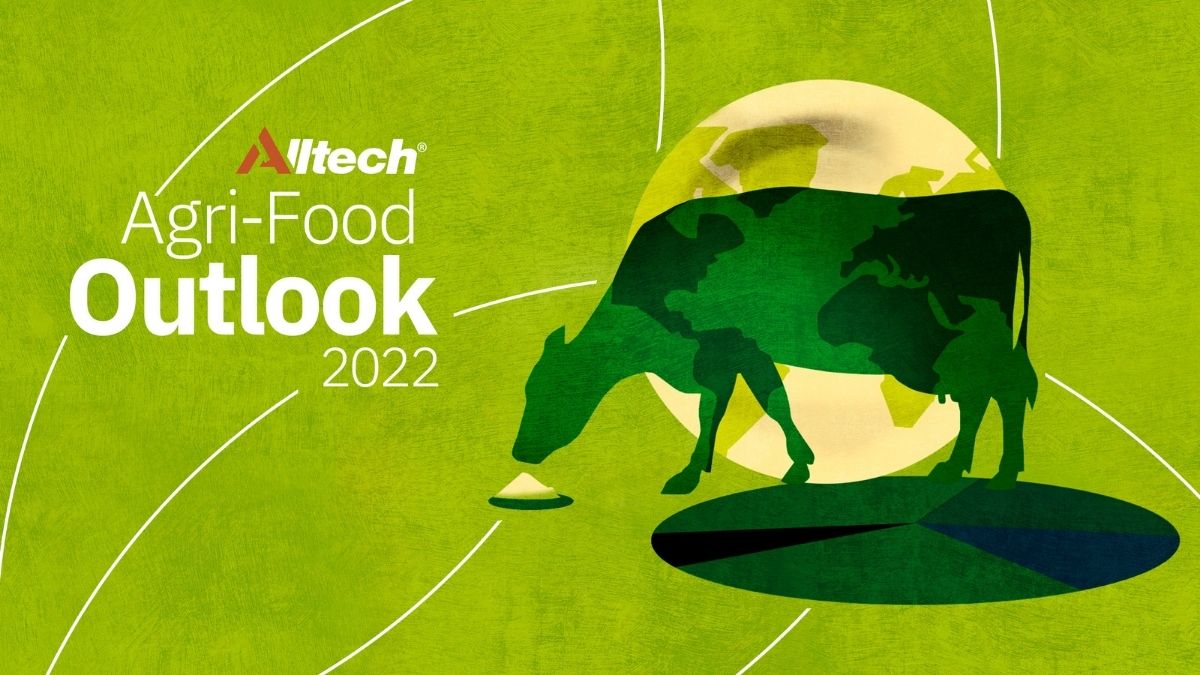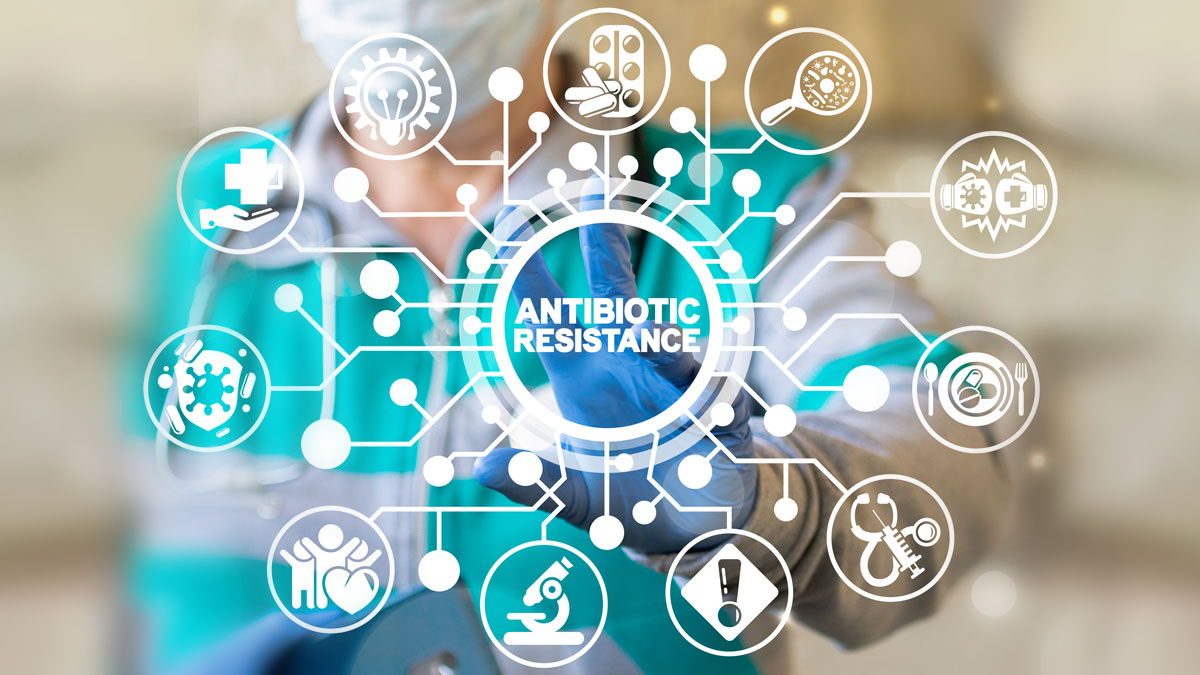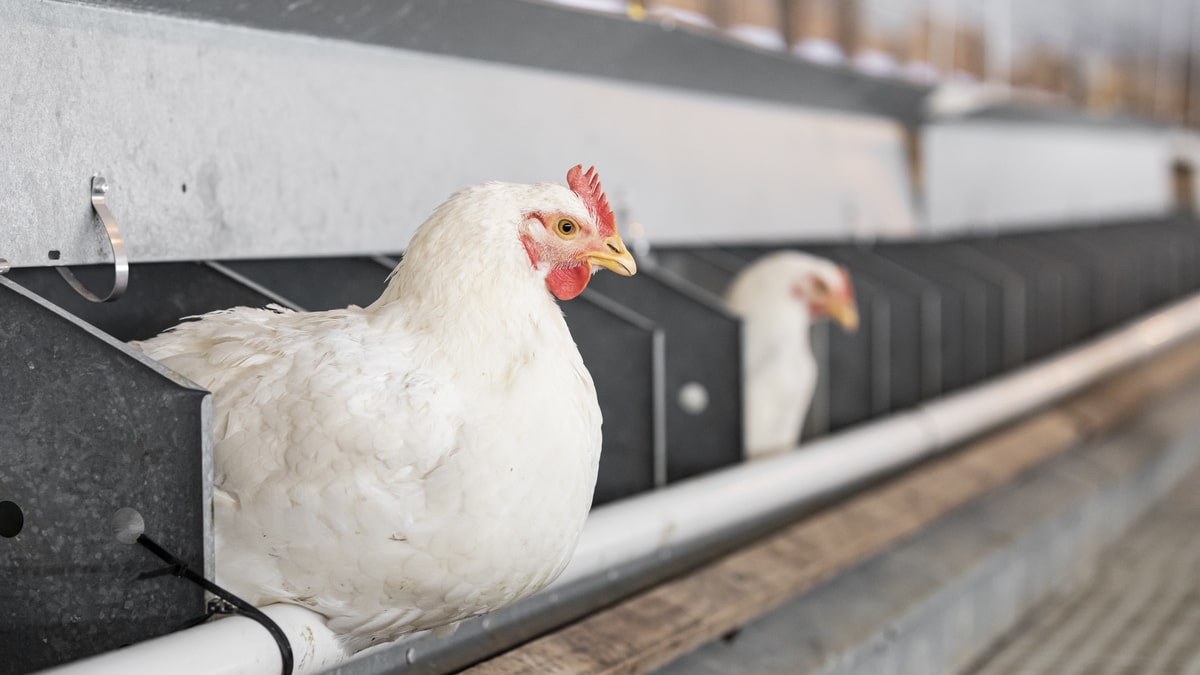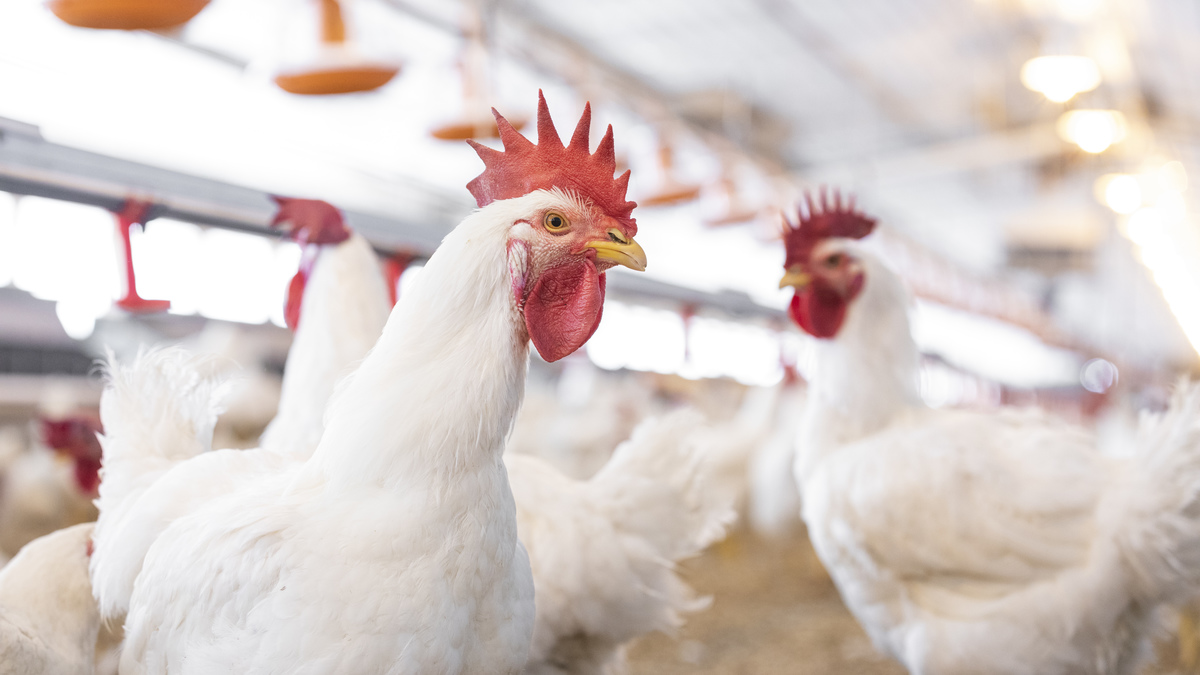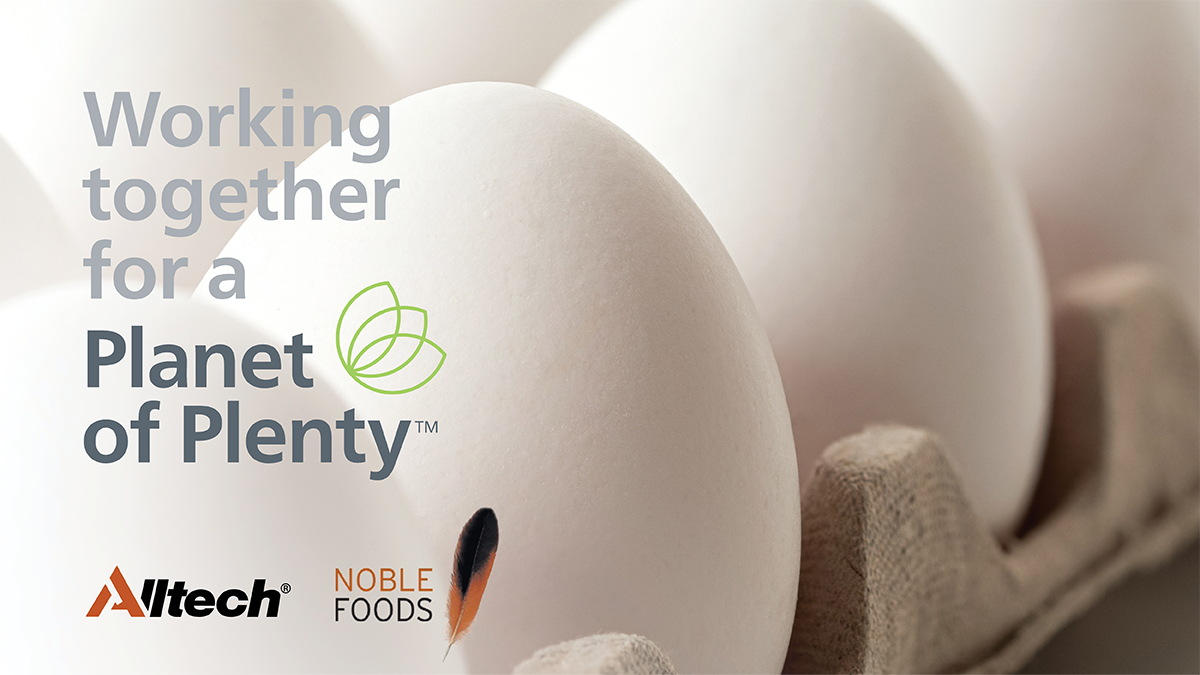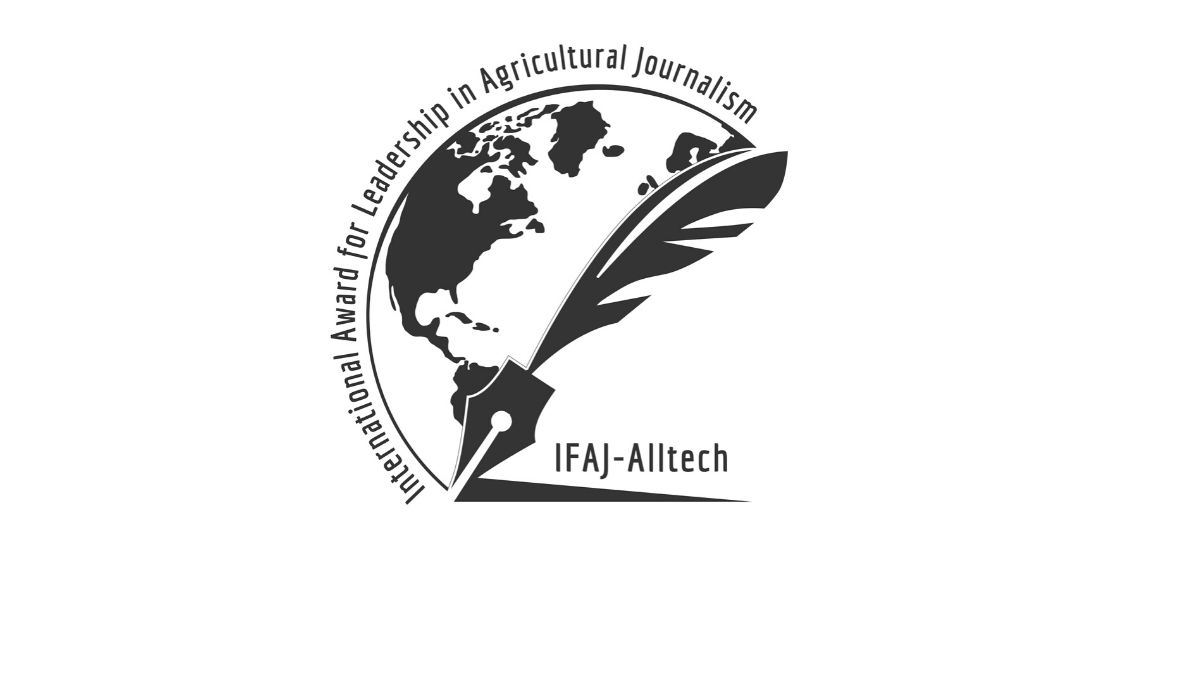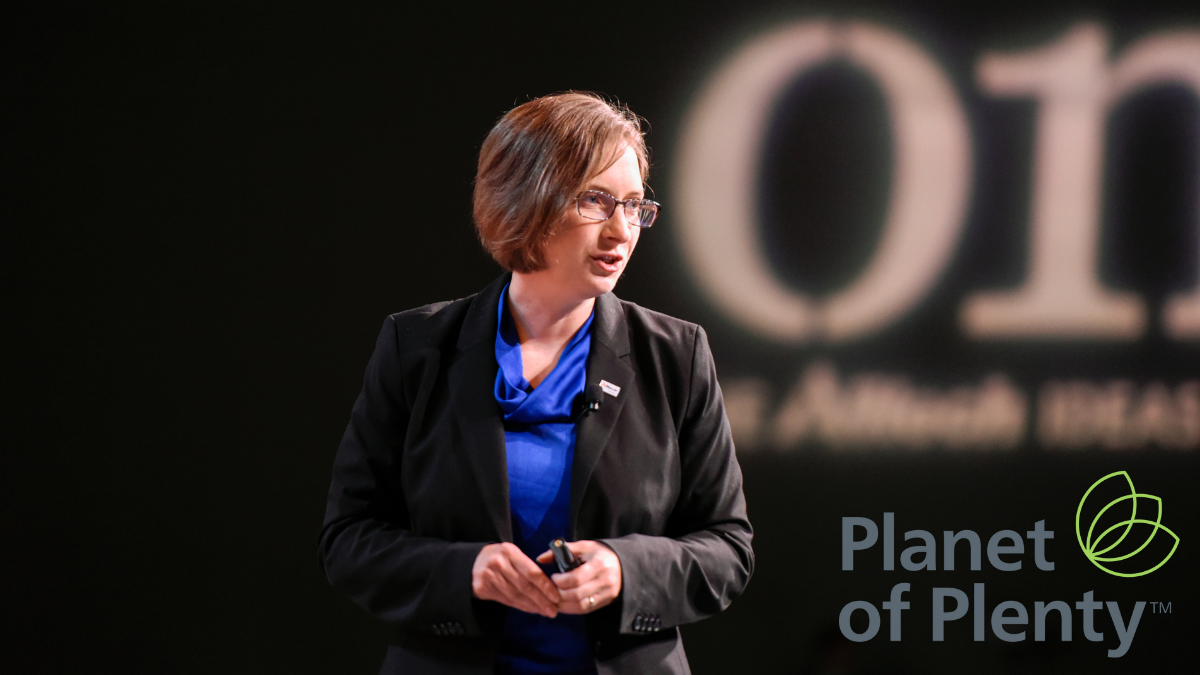Antimicrobial resistance (AMR) is one of the biggest threats facing both animal and human health. Dr. Richard Murphy, research director of the Alltech European Bioscience Center, joins us on Ag Future to discuss the challenges that AMR presents in livestock production and the possible benefits of a multifactorial approach.
The following is an edited transcript of the Ag Future podcast episode with Dr. Richard Murphy hosted by Tom Martin. Click below to hear the full audio or listen to the episode on Apple Podcasts or Spotify.
Tom Martin: Antimicrobial resistance, or “AMR,” in agriculture can negatively impact public health, with an ever-increasing rise in bacterial strains that are less and less sensitive to treatments.
Antimicrobial resistance has the potential to become one of the greatest problems of our generation. Each year, 700,000 people die of AMR. Without action, the death toll could rise even higher, to as many as 10 million deaths annually by 2050, and cause a 3.8% reduction in annual gross domestic product, all of that according to the 2017 report, “Drug-Resistant Infections: A Threat to Our Economic Future.” The world’s poorest people — those living in low- and middle-income countries — are disproportionately vulnerable.
So, the search is on to find ways to reduce antimicrobial use in livestock production. That imperative is challenging scientists, like our guest, to come up with alternatives.
Joining us on this episode of AgFuture is Dr. Richard Murphy, research director of the Alltech European Bioscience Center in Dunboyne, Ireland. Welcome, Dr. Murphy.
Richard Murphy: Thank you. How are you?
Tom Martin: I’m great. And first, if you would, for those of us who know just enough science to be dangerous, if you could, help us with the difference between antibiotics and antimicrobials — or is there a difference?
Richard Murphy: That’s a great question, and I guess there can be some confusion with that.
Typically, when we think about antibiotics, we’re talking about medicines that we use to prevent and treat bacterial infections. “Antimicrobials,” then, I guess, can be used as a broader term, and antimicrobial resistance — you can refer to resistance to drugs to treat other infections that are caused by other microbes, like parasites or perhaps viruses.
So, there is a tendency to use them interchangeably — so, “antibiotics” and “antimicrobials” — but antibiotics are the medicines that we would know, whereas the antimicrobials could be a lot of different types of compounds. So, I hope that helps a little bit.
Tom Martin: It does, yes. Thank you very much.
So, Dr. Murphy, your colleagues and you have written, in an article on Nature.com, about pressures to understand the mechanisms surrounding antibiotic resistance and the search for alternatives. So, let’s begin there. Where are we in our understanding about antibiotic resistance?
Richard Murphy: Gosh, it’s an era that’s really exciting, actually, because when we look at antibiotic resistance, it’s actually been around for a very, very long time. In a lot of more recent work, which would look at, I guess, profiling historical samples, say, in fossilized remains of animals or even in mummies from Egypt, for instance. And with, you know — scientists have been able to identify the presence of resistant gene markers well before what we will call the so-called golden age of antibiotics, which would have been the 1960s and 70s.
So, really, antimicrobial resistance or antibiotic resistance has been around for a long, long time. And the problem has been that the selection pressures that really are driven by not only the use but the misuse of antimicrobials in disease prevention and treatment in humans and in animals — and then, as well as improving their use for improving growth rates in food-producing animals — both significantly contributed to an accelerated development of AMR.
So, while antibiotic resistance has been around for a long, long time, I think it’s the accelerated development of antibiotic resistance which is, really, a lot of concern. That being said, I do think that the intensification of agriculture and widespread use of AGPs, along with the use of antibiotics for so-called metaphylaxis, that’s really allowed for an enhanced spread of resistance.
And then, right now, I guess, the major spread — area of concern has been the spread of antibiotics, the spread of resistant antibiotics of critical importance to humans, and so — antibiotics like silver quinolones , for instance.
The last number of years has really gotten quite interesting in that a lot of the focus has started to shift to trying to understand the makeup of the resistant gene markers that are present within the gastrointestinal tract, the ecosystem. So, within our GI tract and within the GI tracts of animals, you’ve got an entire population of all the microbes — not just bacteria, but fungi; you’ve got viruses; you’ve got protozoa. As well as that group of organisms, you have a population, for want of a word, of resistant gene markers, and that’s called the so-called resistome. And so, that’s a really exciting area.
And what that’s shown, over the last while, is that there are hundreds of markers to antibiotic resistance that are present within this GI tract ecosystem. Some of these can be chromosomally incorporated, from the chromosome of the bacteria or of the fungi, but the majority of them tend to be on, I guess, more what you call as mobile genetic elements. So, small pieces of DNA, certain pieces of DNA called plasmids, or we may have other ones called the intergrins, or that could even be present on phage that can easily move around, the bacteriophage that can easily move around.
I think the biggest area of interest for me has been the demonstration that antibiotic resistance is persistent. And that’s the way I like to think about it, is that once antimicrobial or antibiotic resistance gets a foothold, it can be extremely difficult to get rid of.
And you can look at data from a lot of different monitoring agencies — whether it’s the ECDC here in the EU or NARMS in the U.S. — a lot of different monitoring agencies produce these really good data sets each year, and they all seem to indicate or they all show that simply restricting or banning the use of antibiotics doesn’t necessarily result in an elimination or a very significant decrease in the problems associated with antimicrobial resistance.
And that’s the biggest not only an area of interest for me, but also, I think, it’s also one of the biggest areas of concern for me, that while we have a drive towards restricting and reducing the use of antibiotics, which is very much needed, I think there’s less attention paid to how we’re actually going to reduce the presence or the prevalence of resistant organisms that are already present within our production system or present within the environment. And that’s the, I think, where the most critical needs over the next few years will be, is to look at strategies that we can, I guess, (utilize to) reduce the presence of resistant organisms.
So, I guess that’s a very whirlwind look at the whole area. Certainly, it’s not all-encompassing, but those are the most — the most interesting areas, to be honest.
Tom Martin: Okay. Well, thank you for bringing us up to speed on that.
The EU, the European Union, banned antibiotic use in 2006. And since then, there has been this imperative to find ways to support antibiotic restriction while continuing to promote animal health without contributing to antibiotic resistance.
What have been some important outcomes of that drive to identify alternatives to antibiotics?
Richard Murphy: Yeah. That’s a really interesting question as well. I think the key message that we would see is that, really, there’s no silver bullet. So, you know, taking antibiotics out of the diet has been difficult, and that’ll cause issues for producers. And there is definitely a need to look at this from the point of view of being, of it being a multifactorial issue that we need to look at.
So, for instance, we need to look at management, hygiene practices and antibiotic use for disease prevention in animals that do get sick. But we also need to look at diet, and I think we need to look at nutrition more closely as well, because within the production system, everything is linked.
So, while there is no silver bullet to replacing antibiotics, I do think it’s a much bigger picture that we’re trying to look at. And I do think that, really, when we think about replacement of antibiotics, we will need to take into consideration multiple factors or dimensions, such as animal management and facility hygiene; diet certainly is going to be absolutely critical, and nutritional components play a huge role in transitioning — (that word) is probably the way to look at those — away from antibiotic use, in transitioning towards antibiotic-free production systems.
Tom Martin: What can you tell us about dietary oligosaccharides in feeds as a non-pharmaceutical alternative to antibiotic growth promoters?
Richard Murphy: Again, (that’s) a really exciting area, and certainly one that Alltech has been involved with since the, I guess, the late 1990s. Really, the heart of what we’re talking about with dietary oligosaccharides, such as mannan-oligosaccharides — these are, I guess, isolated components that we take from yeast. So, from baker’s yeast — like Saccrharomyces cerevisiae, for instance.
The realization has been that the oligosaccharides that are present within the yeast cell wall have many different functions. So, some of them, for instance, can be used to reduce the impact of mycotoxin contamination in feeds, and some of them — like mannan-oligosaccharides, for instance — have the ability to control pathogens.
And when I talk about controlling pathogens, I guess, from the historical perspective, mannan-oligosaccharides would been viewed as a tool to control E. coli and control Salmonella. So, they bind the E. coli and Salmonella and prevent them from colonizing the GI tract, thereby reducing the overall load of them within the bird, and then, obviously, reducing problems in the associative consumption of contaminations in meat and egg products, for instance.
Something that is quite of interest when we look at mannan-oligosaccharides is that, typically, they are associated with a performance response. So, we do tend to see improvements in feed conversions, we see improvements in weight gain, but critically, we also see decreases in mortality as well.
So, for a producer, they represent the really elegant, I guess, solution — or elegant part of the solution — to replacing antibiotics in that you can look at them as a way in which you can improve the performance of your animals, your livestock and your poultry, but also, you can begin to reduce the presence of pathogens like E. coli, like Salmonella. And more recently what we have seen is, I guess, is control of other pathogens, like Campylobacter, for instance. That’s really a different mechanism but, certainly, is a very important aspect to the use of mannan-oligosaccharides.
Tom Martin: Are prebiotics such as yeast MRF (mannan-rich fractions) effective alternatives to antibiotics?
Richard Murphy: Okay, so when we talk about MRF, what we’re actually talking about is, again, a further refinement of the whole mannan-oligosaccharides concept. And initially, when we developed our mannan-oligosaccharide product in Alltech, we looked at the interior cell wall of Saccrharomyces yeast.
With MRF, it’s actually a much more refined structure that’s obtained from those MOS preparations. And it’s characterized, I guess, by being a very highly branched mannan sub-structure. So, we call it mannan-rich fraction. MRF as a prebiotic really does represent a very good part of the arsenal that we would have in terms of looking at transitioning producers away from the use of antibiotics and transitioning towards antibiotics-free diets.
And certainly, we developed some quite nice data from the use of MRF within the laboratory and within the research program here in Dunboyne. And we’ve basically shown that with preparations like MRF, you can have dramatic impacts on the growth and the sensitization of antibiotic-resistant bacteria; you can actually change the way in which the bacteria metabolizes, and that makes those bacteria more sensitive to the use of antibiotics. And certainly, yeast MRF do represent a very good part of the puzzle in transitioning away from antibiotic use.
Click here to access more detailed information on MRF.
Tom Martin: After that EU ban on antibiotics, there was a turn to zinc oxide, which also turned out to be problematic. How has zinc oxide also contributed to the spread of antimicrobial resistance?
Richard Murphy: Again, that’s a really good question, and one that we could chat, really, at length about, to be honest. And it tends to get, I guess, when you look at the literature, it can be — there’s a lot of, I guess, conflict in the literature about whether zinc oxide has or hasn’t contributed to the spread of antimicrobial resistance.
Personally, I do think it has. And there are quite a number of excellent publications out there indicating that the use of high levels of zinc — and also, high levels of copper, for instance — can actually select for co-resistance; it’s a co-resistance mechanism that’s been selected for in this case, here.
And the way in which that can be, I guess, easily described is that when you have those mobile genetic elements — and so, those smaller, easily transmissible pieces of DNA that carry antibiotic resistance markers — sometimes, they can have markers that encode resistance to metals, like zinc, like copper, like cadmium, for instance. And when you have a selective pressure — and what I mean by that is when you have a high level of zinc (or) a high level of copper in an animal’s diet, you can actually select for the expression or select for high-level resistance to occur to both the metal and both the antibiotic.
So, while there is a little bit of conflict in the literature about it, I think it is pretty clear, at this stage, that the use of high levels of zinc, zinc oxide, or high levels of copper have, in part, contributed to the development and contributed to the spread of antimicrobial resistance.
Tom Martin: What does the latest research tell us about the benefits of enhancing microbial diversity in the, in the gut?
Richard Murphy: That’s an area that we’ve been working extensively on over the last number of years. And really, the realization here is that when we think about microbial diversity, really, what we’re talking about is the balance of bacteria and microbes within the GI tract.
And I guess us humans, for our own diet, we’re interested in trying to improve the balance of bacteria within our guts. And the same is true for our production animals or for our livestock and for our poultry, that we want to take as much care with increasing the diversity of bacteria within their guts, increasing the balance of bacteria within their guts, in order to improve their health and, obviously, in order to improve the performance of our poultry and our livestock.
So, certainly, when we think about microbial diversity, what we’re really trying to do is improve the balance of bacteria within the gut. And our own research has shown that by the use of yeast MRF, or by the addition of yeast MRF in diets, we can, in fact, improve the balance of bacteria within the GI tract — so we can get an improvement in the overall diversity, which we’ve definitely been able to link to an increased (protection) against pathogen colonization.
So, we get increased — or, rather, we get decreased colonization with pathogens like Campylobacter, like E. coli, like Salmonella. And in many respects, I think that this is a really elegant part of the transition to antibiotic-free diets, is that by improving the balance within the GI tract, or the microbial balance within the GI tract, we actually allow the gut to begin to self-police itself. So, we enable the bacterial ecosystem within the gut to more effectively control and more effectively prevent pathogens from colonizing the GI tract.
So, I really do think that microbial balance or microbial diversity within the gut is a critical part of any antibiotic-free program.
Tom Martin: Why is it important to understand the role of intestinal microbial communities in existing feed additives, as well as in the development of new additives?
Richard Murphy: Again, that’s a great question. And I guess it comes back to trying to understand the factors that influence the diversity of bacteria within the gut or the factors that influence the balance of bacteria within the gut.
So, it’s a multifactorial process, so everything, including management practices, hygiene in the facility, the diet that’s being used, whether we’re changing diets — so, going from starter to grower to finisher — whether we’re using nutritional additives, all of these factors together will influence the balance or influence the diversity of bacteria within the gut.
So, when we make a subtle change within the diet, we may actually have an impact on that balance or an impact on that diversity. So, really, we need to think carefully about the impact that a change in the diet may have or the use of a new additive, what (impact) they may have for a production system.
And really, for me, I think it’s — we can take it right back to trying to understand how diverse or how good the balance of bacteria within the gut is. Any factors that reduce that balance or reduce that diversity, they should be avoided. So, really, what we need to do is look at using additives or developing newer additives that solely are designed to improve the balance or improve the diversity of bacteria within the GI tract.
Tom Martin: Has the research made it possible to attribute cause and effect to the way nutrients affect changes in the gut microflora, which are ultimately responsible for digestion and metabolite production?
Richard Murphy: Yes, absolutely, it has. And a lot of this, I guess, has its genesis, really, in our work which has looked at the diversity or looked at the balance of bacteria within the GI tract.
If you think about it, within our guts, we have an ecosystem of microbes, and that ecosystem, I guess, it breaks down the nutrients that are in the diet, and they produce short-chain fatty acids, for instance. So, if we change the balance of bacteria within the GI tract, we can actually influence the way in which that bacteria functions or the way in which they produce VFAs or short-chain fatty acids.
And that’s something that we’ve found with the use of MRF, that when you encourage the beneficial change of bacteria within the GI tract, when you improve the balance and improve the diversity of bacteria within the GI tract, you actually begin to change the way they act as an ecosystem. And that change typically is shown by improvements in butyrate production or improvements in propionate production.
And that, to me, is a really good, I guess, proof of our ability to modulate or ability to change metabolite production, is that by influencing the bacterial balance, you actually change the metabolites they produce — and in some cases, what’s beginning to get really interesting for us is that the metabolites produced in certain regions of the GI tract actually have a profound influence on the colonization of that region of the GI tract with pathogens.
A good example of that is our work in Campylobacter, where we’ve basically shown that by using yeast MRF in the diet, you change the balance of bacteria within the cecum. And by changing that balance of bacteria within the cecum, you change the way in which they function, and that function is often demonstrated by changes in butyrate production. And when you get those increased butyrate levels, you actually see a decreased Campylobacter load in the cecum.
So, it’s quite an elegant way in which we can control Campylobacter: Change the balance of bacteria within the cecum. That changed balance then shifts the metabolite production towards more favorable metabolites, like butyrate, and those butyrate molecules then begin to control the Campylobacter or make it less hospitable of an environment for Campylobacter to grow.
Tom Martin: Okay. You touched on this briefly earlier in our conversation, but I wanted to come back to it: current trends in the world of antibiotic research and the work to identify safe alternatives. And I’m just wondering: Among those trends, what excites you most?
Richard Murphy: Really, what’s beginning to get, I guess, particularly exciting but is also an area that really needs to be looked at are the strategies that we need to look at reducing the presence of resistant organisms.
So, on the one hand, we do recognize that, you know, there is a need for newer antibiotics to be developed. So, we need to be consistently looking out for antibiotics to replace the ones that we have, which will safeguard us against the development of antimicrobial or antibiotic resistance.
But at the same time, I think, from, I guess, from a production animal point of view, do we actually need to look at using antibiotics at all? Should we be looking more towards, I guess, transitioning to antibiotic-free diets? And that’s really, I guess, what’s of interest to me, is how we can enable that research — so, how we can not only move towards the ABF diets, so move towards antibiotic-free programs, but also, what benefits we can have in terms of — will that transition towards an ABF system, will that actually reduce the presence of resistant organisms that may be present, say, for instance, from — present in the environment that we’re growing our production animals in? And can we reduce, then, the overall impact of those on the animal?
Tom Martin: Well, tell us about the Alltech solution — its Seed, Feed, Weed program.
Richard Murphy: This is a program that we’ve worked on for a number of years now, and again, it’s back to the comment I made earlier about there being no silver bullet. So, it can be quite difficult to develop programs whereby you remove antibiotics and replace them with a single compound or a single nutritional additive.
Really, with the Seed, Feed, Weed program, it’s multifactorial. And so, at its heart, what we’re looking at is the “seeding,” if you like, of young animals’ guts with probiotic bacteria. So, that looks at enhancing the resistance of the young animal to colonization of their gut with pathogenic organisms.
We have a “feeding” element, which is a low-pH element, whereby we use a fairly safe organic acid that reduces the pH within the GI tract — so it makes it less favorable for the growth of organisms like Salmonella, like Campylobacter.
And then, lastly, we have the “weeding” element. So, we use yeast MRF prebiotics as a way in which we can control, further control and further restrict not just the colonization of the gut with pathogens like E. coli and Salmonella, but then, also, changing the metabolites that are produced within the gut, so that you get decreased campylobacter prevalence, for instance.
So, the Seed, Feed, and Weed is a multifactorial program. Again, there is no silver bullet, I think, to complete antibiotic-free production systems. You need to look at multifactor programs such as this and then also look at management and hygiene practices as well.
Tom Martin: That’s Dr. Richard Murphy, research director at the Alltech European Bioscience Center in Dunboyne, Ireland.
Thanks, Dr. Murphy.
Richard Murphy: Thank you.
Tom Martin: I’m Tom Martin. Thank you for listening.
This has been AgFuture, presented by Alltech. Thank you for joining us. Be sure to subscribe to AgFuture wherever you listen to podcasts.
